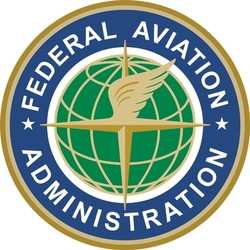Fri, Apr 12, 2013
But Ongoing Challenges Continue To Limit Expected Benefits
A Government Accountability Office (GAO) report released this week finds that the FAA is pursuing key operational improvements to implement the Next Generation Air Transportation System (NextGen) in the "midterm," which is 2013 through 2018. These improvements focus on establishing Performance Based Navigation (PBN) procedures at key airports, but benefits could be limited in the midterm.

PBN uses satellite-based guidance to improve air-traffic control routes (known as "procedures"). These procedures can deliver benefits to airlines, such as fuel savings and increased efficiency, particularly in congested airspace. To deliver benefits more quickly, the FAA made trade-offs in selecting sites and in the scope of proposed improvements. For example, the FAA is not implementing procedures that will trigger lengthy environmental reviews. These trade-offs, with which airlines and other stakeholders generally agree, will likely limit benefits from these PBN initiatives early in the midterm. The FAA has also made some progress in other key operational improvement areas, such as upgrading traffic management systems and revising standards to improve aircraft flow in congested airspace. However, the FAA has not fully integrated implementation of all of its operational improvement efforts at airports. Because of the interdependency of improvements, their limited integration could also limit
benefits in the midterm.
The GAO says the FAA has efforts under way to help overcome overarching obstacles to NextGen implementation identified by an advisory task force, but challenges remain, and many of these efforts are scheduled to take a number of years. The FAA efforts include, for example, a new process for focused and concise environmental reviews for some proposed actions (e.g., new procedures), where a detailed analysis of the environmental impacts is limited to only those categories involving potentially significant impacts, such as increased noise or emissions. Some of these efforts do not, however, fully address previously identified obstacles. The FAA has not fully addressed obstacles to selecting new PBN procedures that will best relieve congestion and improve efficiency, for example. FAA continues to rely on requests for new procedures from airlines and other stakeholders. This reliance may or may not result in procedures that maximize benefits to the national airspace system. Not addressing remaining
challenges could delay NextGen implementation and limit potential benefits.

The report indicates that while the FAA has made progress in developing NextGen performance metrics, according to key stakeholders, the agency currently provides limited data to demonstrate its progress in implementing midterm improvements and the associated benefits. The FAA is in the process of harmonizing performance metrics across all agency programs to ensure that metrics align with agency targets and goals. However, information is incomplete on the midterm improvements and their benefits at selected airports, and airlines and others lack access to needed information to make fully informed investment decisions. The FAA has developed a website to report on NextGen implementation, but published information is not fully tied to the agency's implementation goals. The agency's plans also provide limited information about future implementation, such as locations and expected benefits. Better performance and planning information would provide airlines with a stronger basis for making decisions to
invest an estimated $6.6 billion on NextGen technology through 2018.
More News
Pilot Applied Full Aft Stick And Nose-Up Trim, But The Airplane Remained On The Runway Analysis: The pilot reported that a preflight inspection and flight control checks revealed n>[...]
A Few Questions AND Answers To Help You Get MORE Out of ANN! 1) I forgot my password. How do I find it? 1) Easy... click here and give us your e-mail address--we'll send it to you >[...]
From 2022 (YouTube Edition): Before They’re All Gone... Humankind has been messing about in airplanes for almost 120-years. In that time, thousands of aircraft representing i>[...]
Advanced Air Mobility (AAM) A transportation system that transports people and property by air between two points in the NAS using aircraft with advanced technologies, including el>[...]
Aero Linx: MQ-1B Predator The MQ-1B Predator is an armed, multi-mission, medium-altitude, long-endurance remotely piloted aircraft that is employed primarily as an intelligence-col>[...]
 NTSB Final Report: Douglas A-4K
NTSB Final Report: Douglas A-4K ANN FAQ: Q&A 101
ANN FAQ: Q&A 101 Classic Aero-TV: PBY Catalina--From Wartime to Double Sunrise to the Long Sunset
Classic Aero-TV: PBY Catalina--From Wartime to Double Sunrise to the Long Sunset ANN's Daily Aero-Term (07.01.25): Advanced Air Mobility (AAM)
ANN's Daily Aero-Term (07.01.25): Advanced Air Mobility (AAM) ANN's Daily Aero-Linx (07.01.25)
ANN's Daily Aero-Linx (07.01.25)




